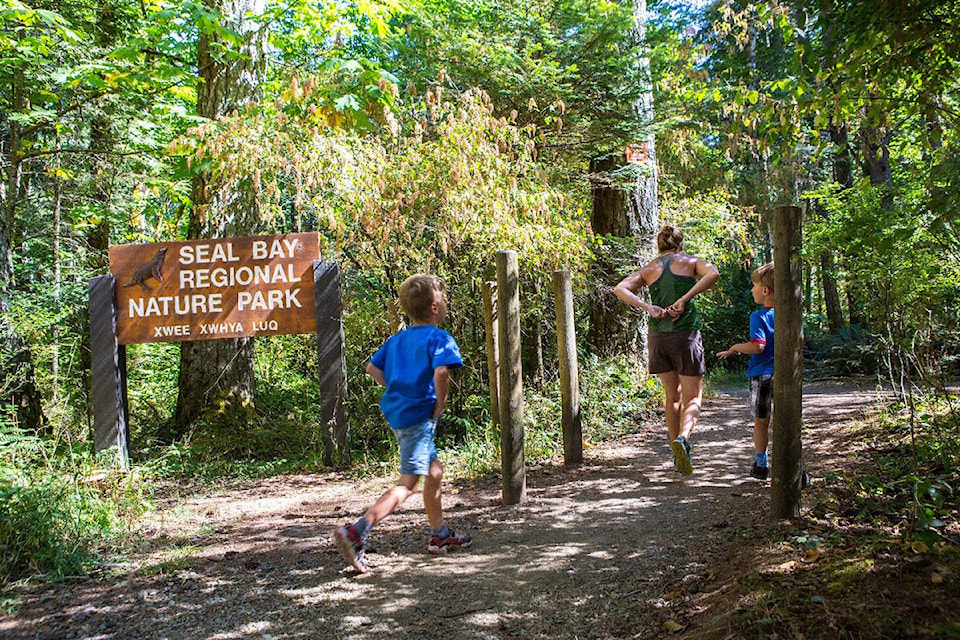Megan Tomlinson
Special to The Record
Travel restrictions brought on by the COVID-19 pandemic have propelled people to reconnect with their local outdoor spaces. The intuitive call to return to nature is logical - it is broadly recognized that spending dedicated time in nature provides holistic health benefits.
Forest bathing, or Shinrin-yoku, a therapeutic concept conceived in Japan, is an activity of immersing oneself into the forest atmosphere via the senses. Phytoncides are antimicrobial organic compounds emitted by trees and plants, resemblant of essential oils and thought to have health-promoting effects on people. Peer review studies report an overall improvement to immune function in participants immersing themselves in forest bathing. Specifically, researchers notice an increase in natural killer cells, a lymphocyte that seeks out and destroys abnormal cells, such as virus-infected cells or tumor cells.
Nature therapy, which has been defined as a “meaningful connection with nature,” can be part of a chronic disease self-management regime to decrease risks associated with heart disease, hypertension and diabetes. Further health benefits include a decrease in adverse events related to chronic obstructive pulmonary disease (COPD), an improvement in sleep quality and an increase in cognitive skills such as concentration, memory and creativity. In youth living with attention deficit hyperactivity disorder (ADHD), 20 minutes of nature-based activity per day has been shown to improve concentration scores and reduce reports of anxiety and depression.
At the end last year, the BC Parks Foundation launched a program, PaRx, whereby physicians and nurses can prescribe nature therapy with a recommendation of two hours per week, split into 20- to 30-minute ‘doses’ throughout the week. Here, on the unceded traditional territory of the K’òmoks First Nation, there is an abundance of nature-based settings. And yet not all community members have the same access to these places. Perhaps by promoting nature as a legitimate health intervention, people and communities will work towards inclusive access for all citizens and prioritize the protection of forests and wild spaces.
A beneficial side effect of nature therapy is a population of people who are more likely to be engaged in conserving the natural world. Protecting the forests and natural vegetation is a fundamental climate change solution. Carbon sinks are reservoirs that sequester carbon dioxide from the atmosphere. Forests and oceans act as marvelous carbon sinks via the photosynthesis of plants or plankton. For example, the trees that make up the forests literally draw down carbon from the atmosphere, process it, and store it effectively in the earth’s soil. And while not all carbon sinks operate with the same efficacy, there is awesome potential in tackling climate change by protecting and restoring natural landscapes.
A local example of such a climate change solution is Kus-kus-sum, spearheaded by Project Watershed, K’òmoks First Nation and the City of Courtenay. It represents a community collaboration that will increase sequestration of carbon from the atmosphere, provide a meaningful contribution to indigenous reconciliation and reduce localized flooding, a weather event we can expect to see more of as a result of climate change. Lastly, the citizens of the Comox Valley will have increased access to spaces for nature therapy.
As we turn to nature and soothe our nervous systems, may we be inspired by the natural world and hold reverence for the land on which we live, work and play. May we hold gratitude and deep respect for Indigenous peoples and knowledge keepers who have been stewards of this land. And may we consider the future generations who deserve to smell the sweet aroma of pine and absorb the health benefits found in the forests and wild spaces.
Megan Tomlinson R.N. is a member of the Comox Valley Nurses for Health & the Environment www.cvnhe.org
